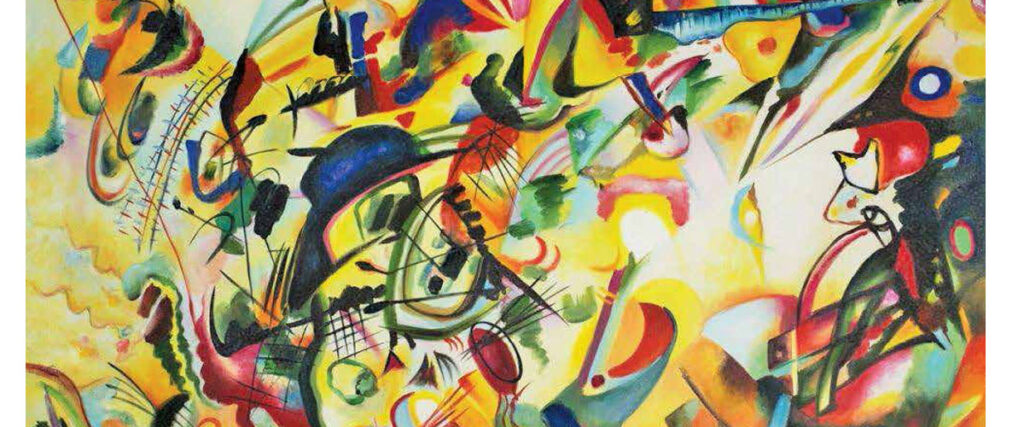Something about abstract art is so intriguing that it makes it difficult to take one’s eyes off of it. Maybe just the way it disassociates from reality is all or the possibility of leaving everything up to the observer’s imagination. There is no single approach; anyone can think of anything the way they wish to. The picture is definitive, yet the possibilities of perceiving it are endless. It is remarkable how one’s emotions on canvas can spark a thousand in others. Depicting such is one of many creations, Wassily Kandinsky’s COMPOSITION VII. What might come across as mere doodles, random shapes, and scribbles was actually very well thought out and meticulously planned by Kandinsky over a period of months. Around thirty different sketches were made in watercolours and oils prior to this final blend of shapes and colours, spread over a 78*118-inch canvas which took four days to complete and currently hangs in the Tretyakov State Gallery in Moscow. Kandinsky believed himself to be an artist and a poet. He saw his art as linked to music and used the terms such as ‘improvisations’ and ‘compositions’ to describe his art. It is fatiguing to look beyond the chaos in this painting even after observing it several times, but in some way, it can remind one of the chaos going on in their own head. You can relate the multiple colours and shapes to different emotions and faces that a person has (also visible in the painting, though somewhat disintegrated) and how they recondition with distinct people and surroundings. In the midst of trying to please everyone, people lose touch with their true selves.
Fighting different battles with one’s own self, the anxiety, the feeling of not being good enough, the insecurities that come from some past trauma, some scars that never really go away or, maybe that one does not let go of, could be represented by the needle-like strokes in the left. In a world where others’ opinions and perceptions matter more, it feels like the mind is always running and never settling as overthinking every situation, doubting, and judging yourself becomes a regime. Plastering on a fake face seems easier as one becomes more self-conscious and insecure. Building up walls around yourself comes naturally as you get more and more afraid of letting people in, depicted by a fenceline structure at the bottom right, which can also represent the growing distrust in others. Like the overlapping shapes shown in this picture, one’s thoughts always overlap, causing restlessness, inability to focus, and uneasiness. Parts of white in this painting indicate unsuccessful efforts to be at peace with everything as other deliberations kick in, and the whole cycle begins again. Just like this composition, not everything in life is comprehensible. Sometimes, you cannot stop or hide away from the monsters creeping into your house, and every door is hard to close; sometimes, chaos is all one gets in life, and it seems impossible to outrun. The sole thing you can do is embrace it and know that it can be beautiful. The randomness and complexity of this painting may incline some to dislike it, but for others, that is what makes it beautiful. Where do you stand?
By: Yashika Nandwani

